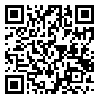Sun, Mar 23, 2025
[Archive]
Volume 23, Issue 1 (2013)
IJAUP 2013, 23(1) |
Back to browse issues page
Download citation:
BibTeX | RIS | EndNote | Medlars | ProCite | Reference Manager | RefWorks
Send citation to:



BibTeX | RIS | EndNote | Medlars | ProCite | Reference Manager | RefWorks
Send citation to:
Mozaffar F, Hosseini S B, Bisadi M. Promotion of Researchers’ Creativity and Innovation in an Architecture and Urban Design Research Center with Effective Spatial Aspects of Offices. IJAUP 2013; 23 (1)
URL: http://ijaup.iust.ac.ir/article-1-119-en.html
URL: http://ijaup.iust.ac.ir/article-1-119-en.html
1- Iran University of Science and Technology, Tehran, Narmak, Iran University of Science and Technology, Department of Architecture and Environmental Design
2- Iran University of Science and Technology, Tehran, Shariaty st., Ziba st., #42, postal code: 1948846111 ,bisadi_m@iust.ac.ir
2- Iran University of Science and Technology, Tehran, Shariaty st., Ziba st., #42, postal code: 1948846111 ,
Abstract:
Abstract:
Creativity and innovation are major drivers for developments of societies and nations. In this way, research activities have an extremely significant role whose promotion is strongly dependent on the creativity and innovation. There are several factors such as the built environment, which affect the creativity and innovation. This paper extracts a set of design rules for researchers' offices in an "architecture and urban design research center", which lead to the growth of researchers' creativity and innovation. The type of plan, namely open or closed plans, and spatial aspects of researchers’ offices are investigated from the perspective of factors influencing the creativity and innovation. The spatial aspects, chosen based on the available literature, are privacy, beauty, spatial diversity/flexibility, and proximity/visibility. Additionally, four factors affecting the creativity and innovation consist of tranquility/physical comfort, motivation, creative thinking, and communication. The survey methodology, with a 26-question four-choice questionnaire, was adopted here for the sake of numerical studies. The sample group covered 91 faculty members and Ph.D. students associated with Architecture and Urban Design Departments of several universities in Tehran. The collected data has been analyzed through a statistical method, named repeated measure analysis of variance (RM-ANOVA), and the most affected creativity and innovation factors by spatial aspects are specified.
Keywords: Creativity and innovation, spatial aspects, offices, architecture and urban design research center.
Type of Study: Research Paper |
Subject:
Architecture
| Rights and permissions | |
 | This work is licensed under a Creative Commons Attribution-NonCommercial 4.0 International License. |




